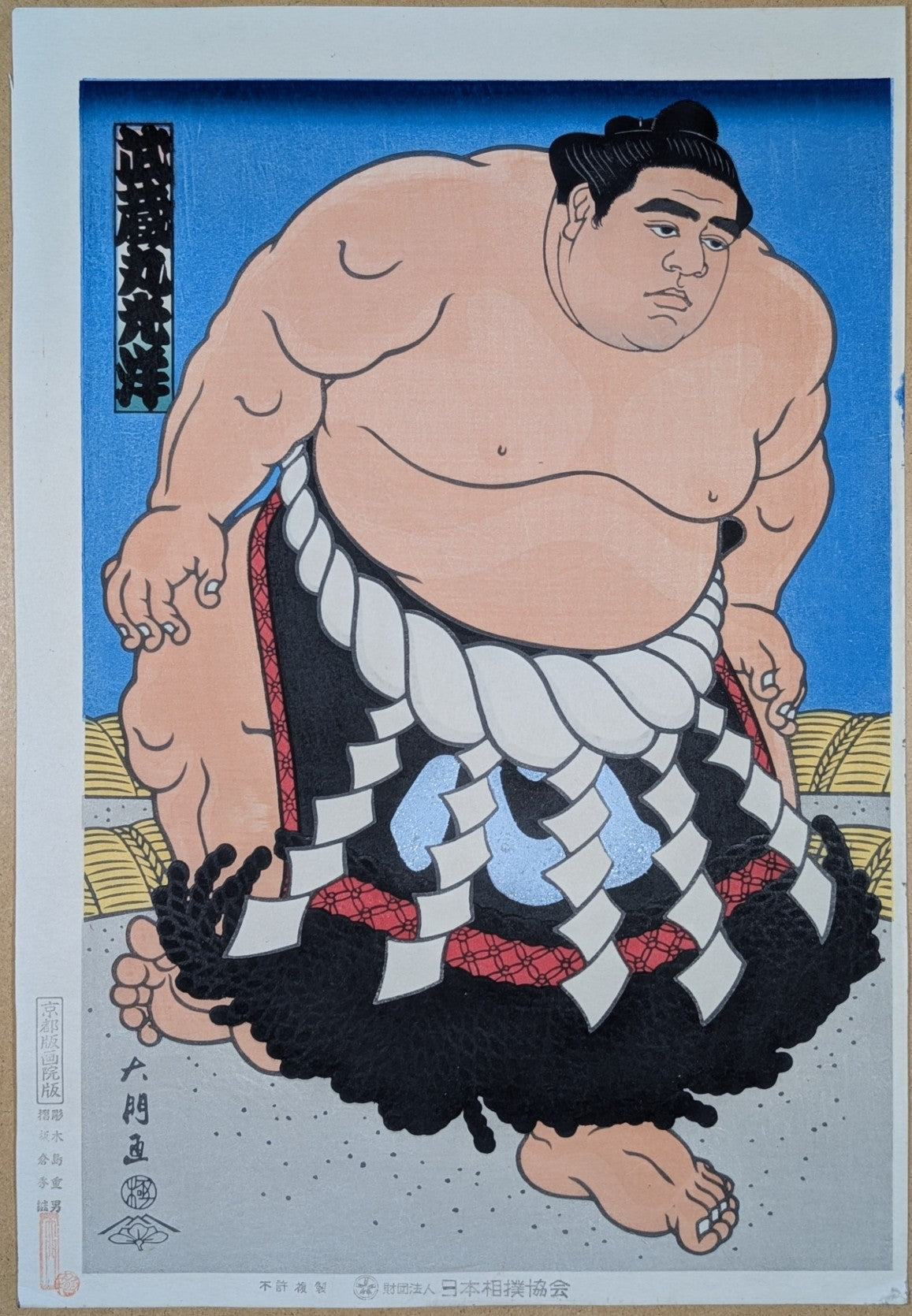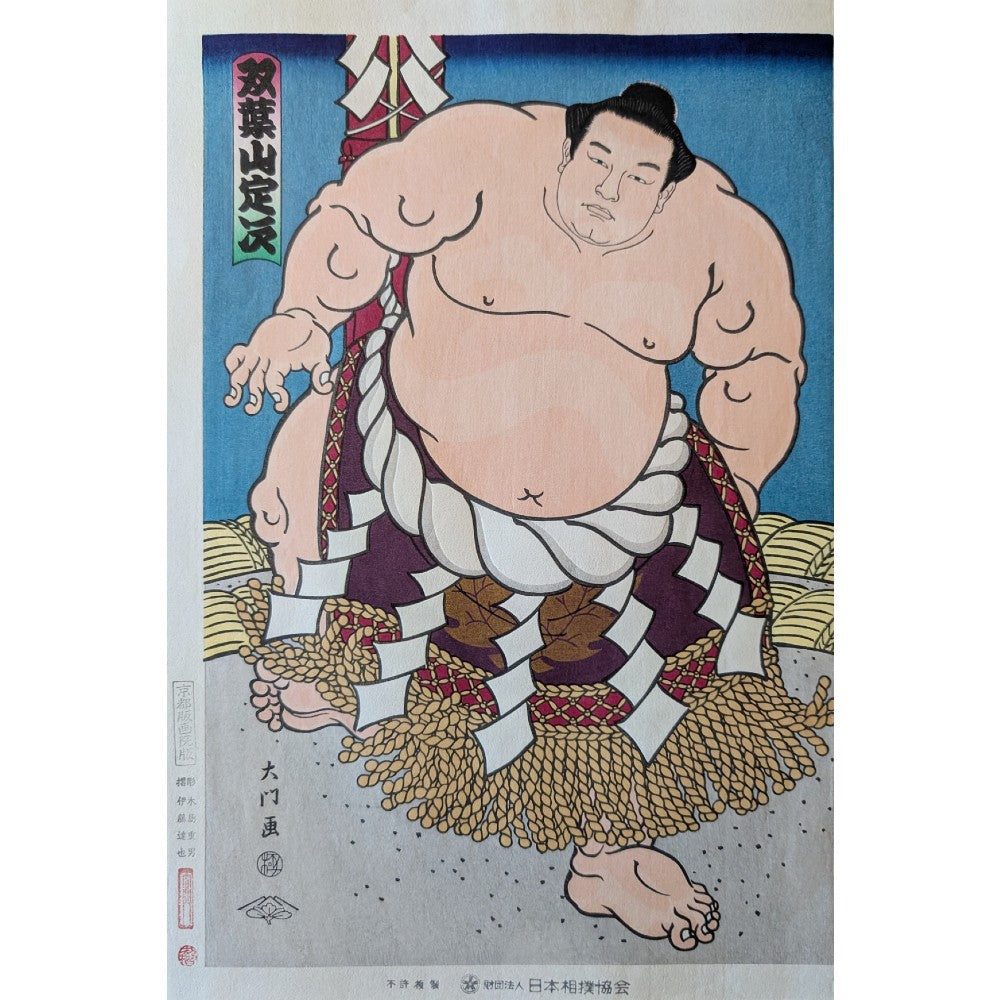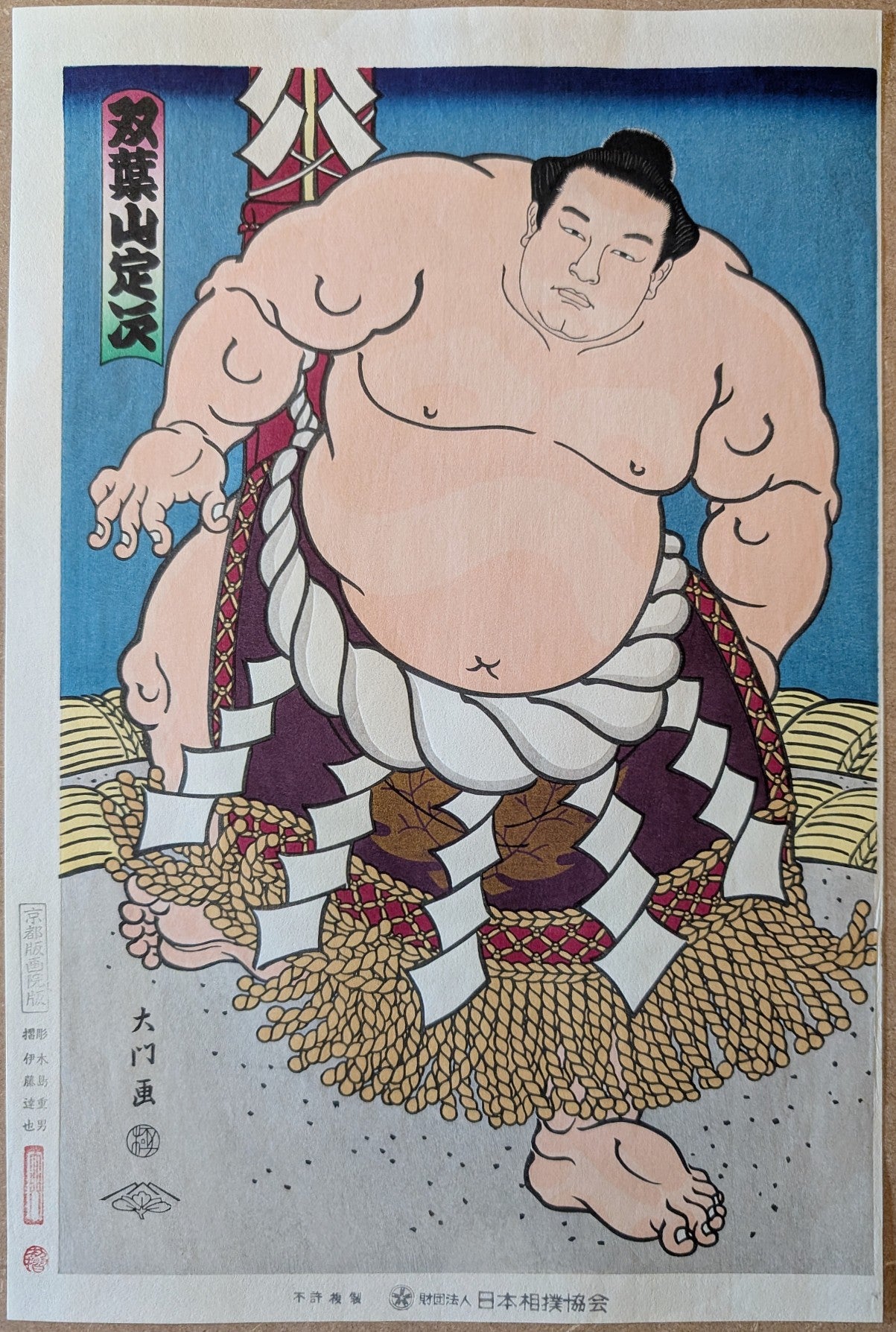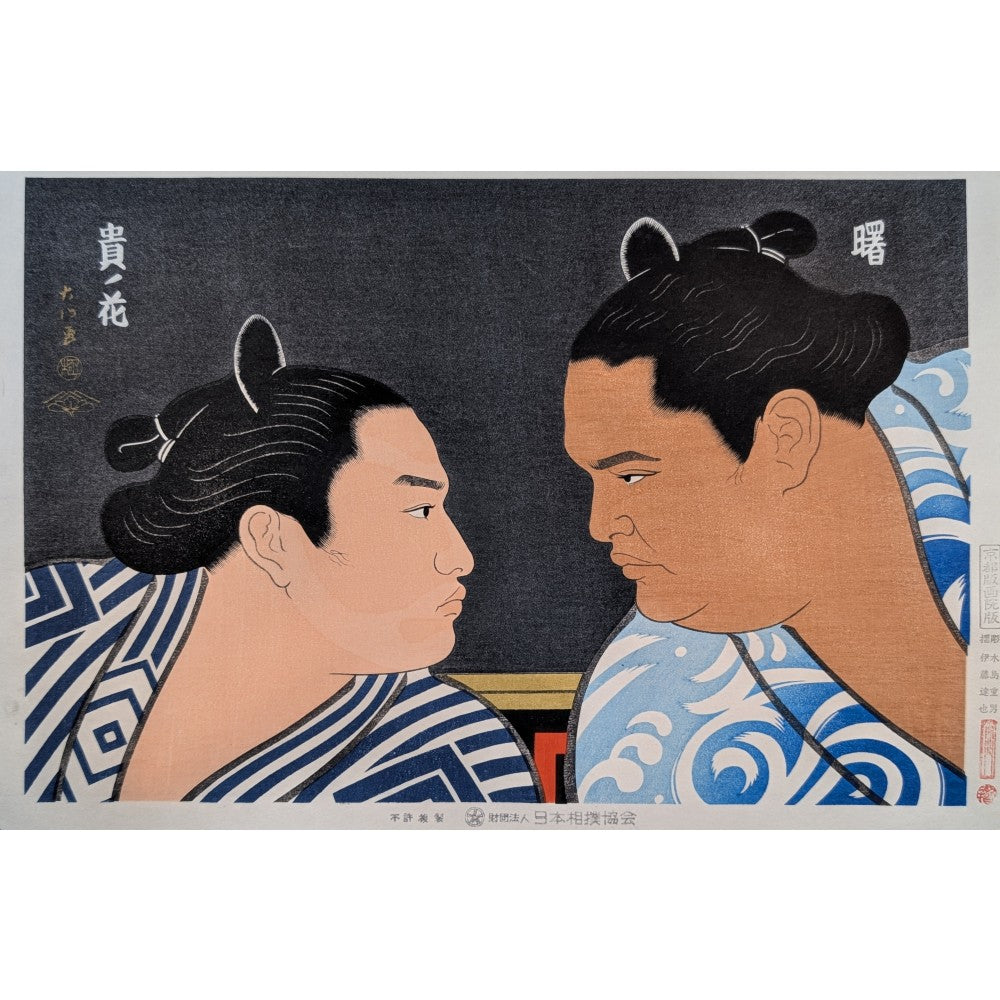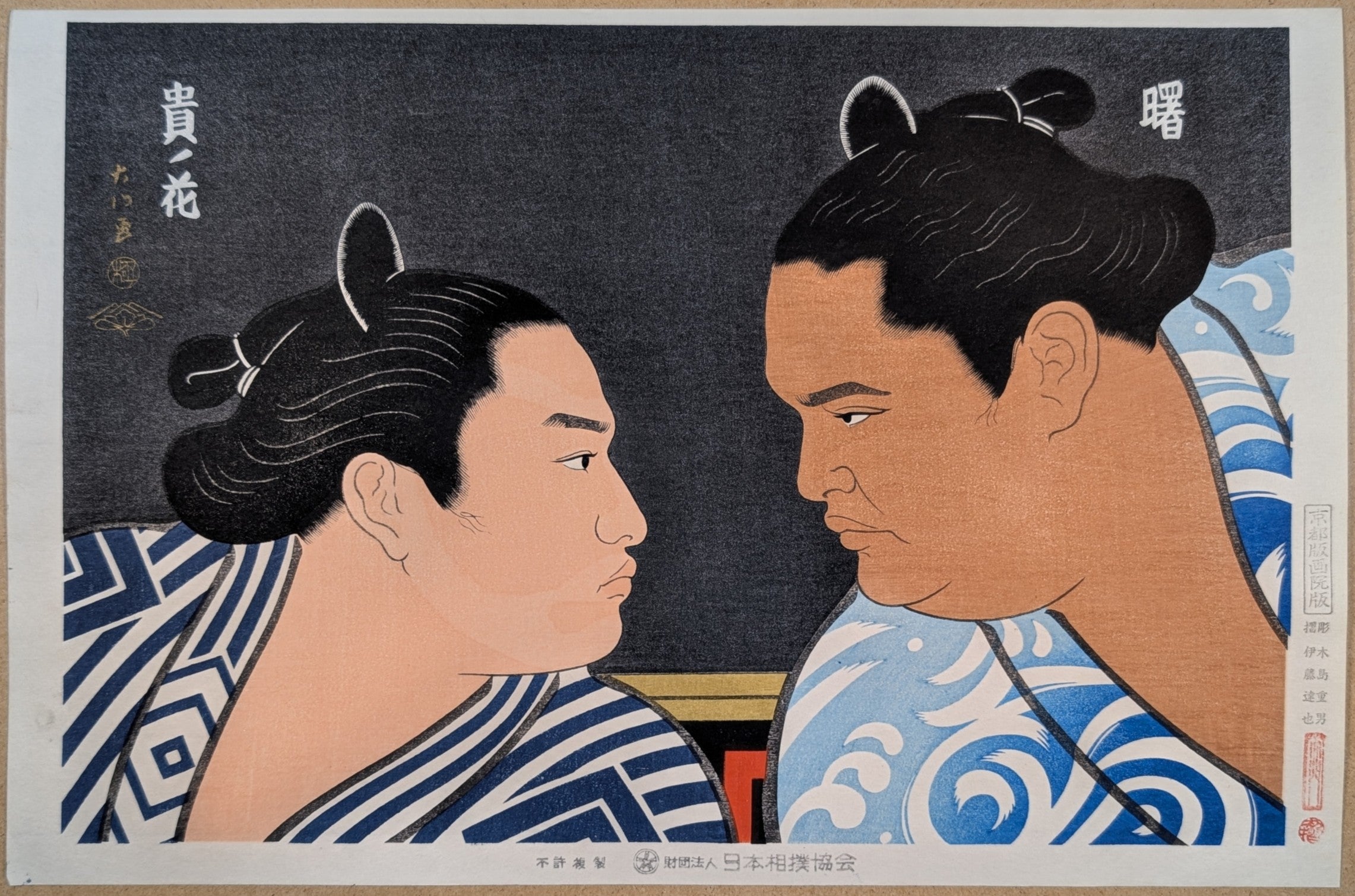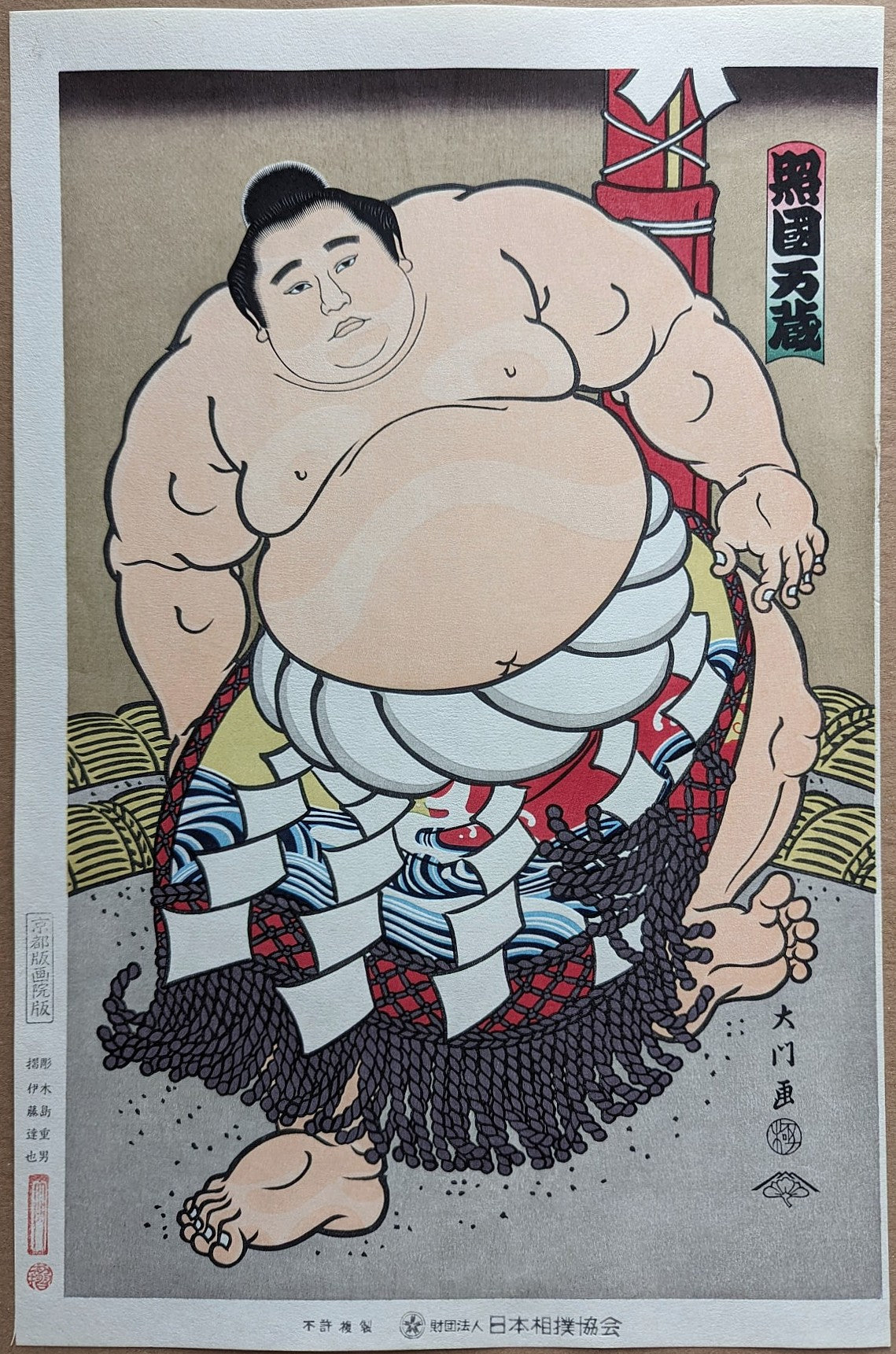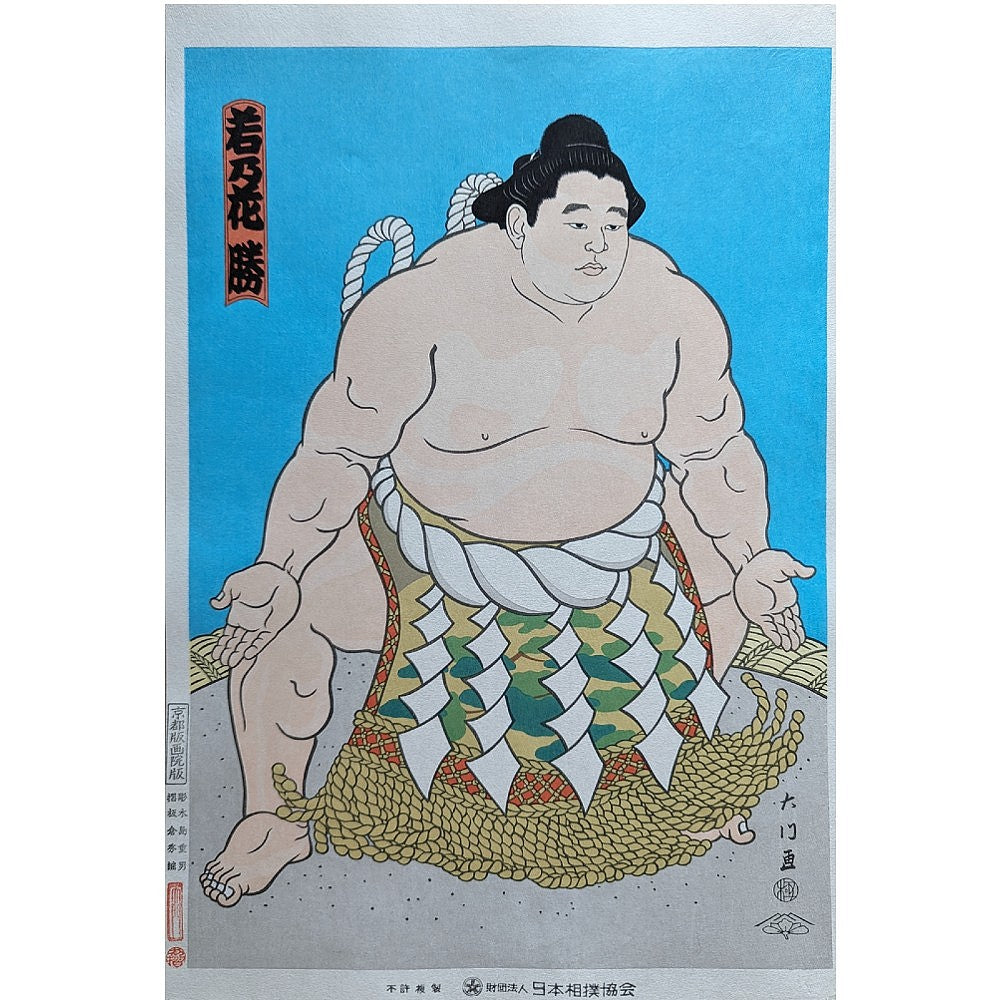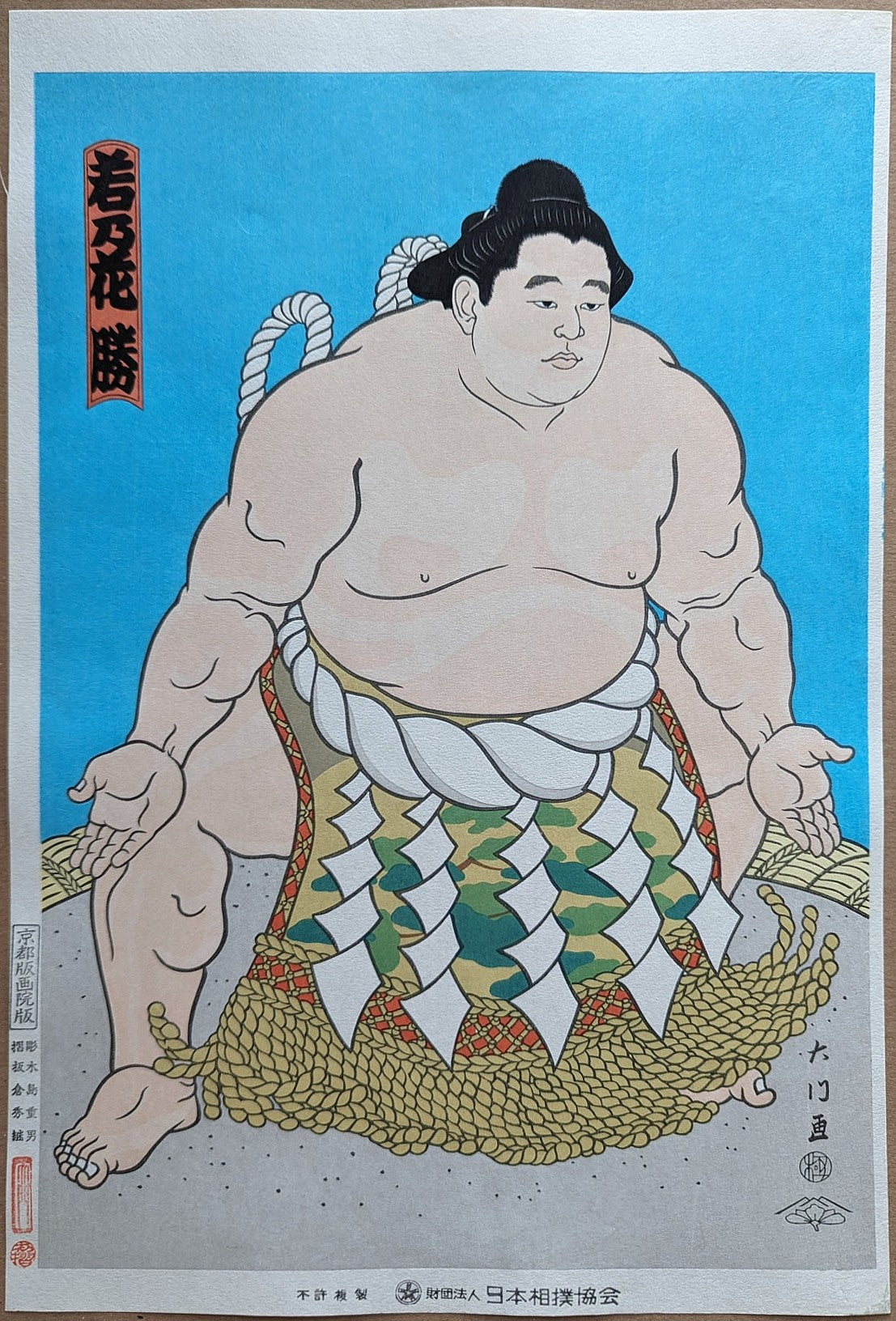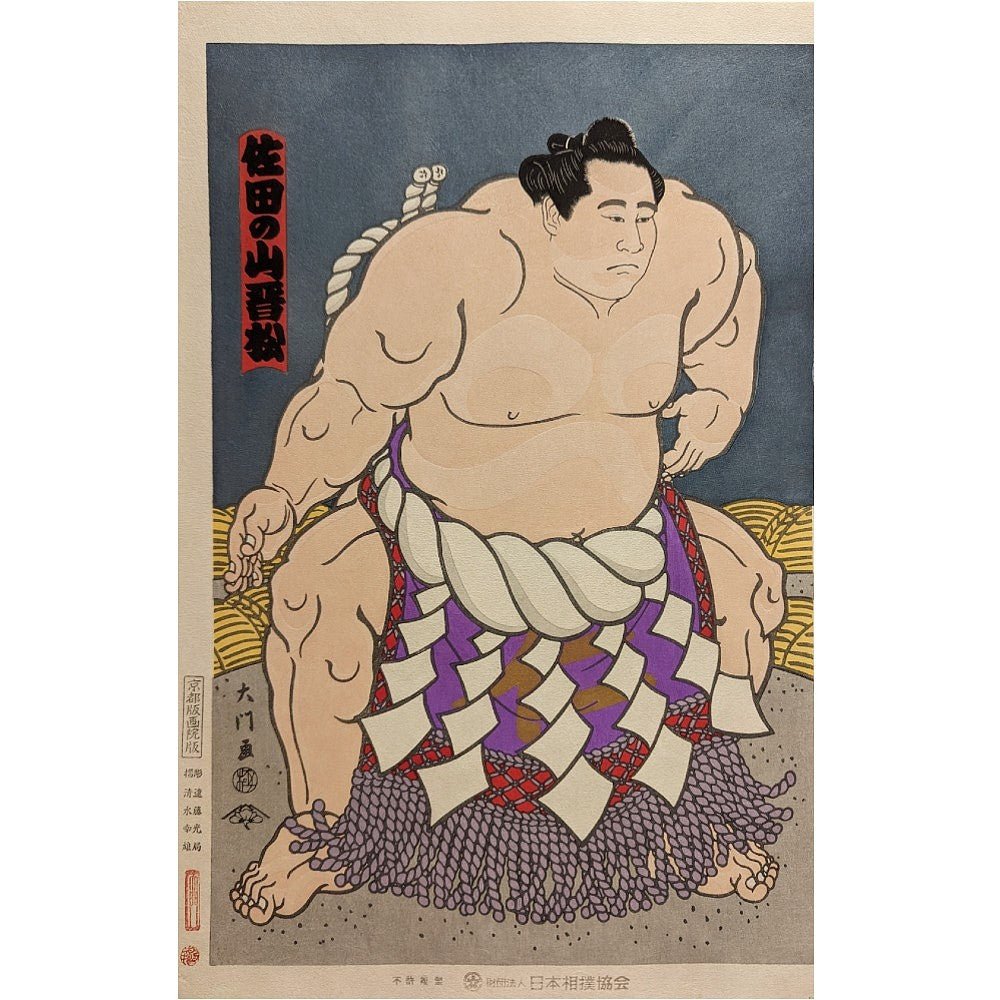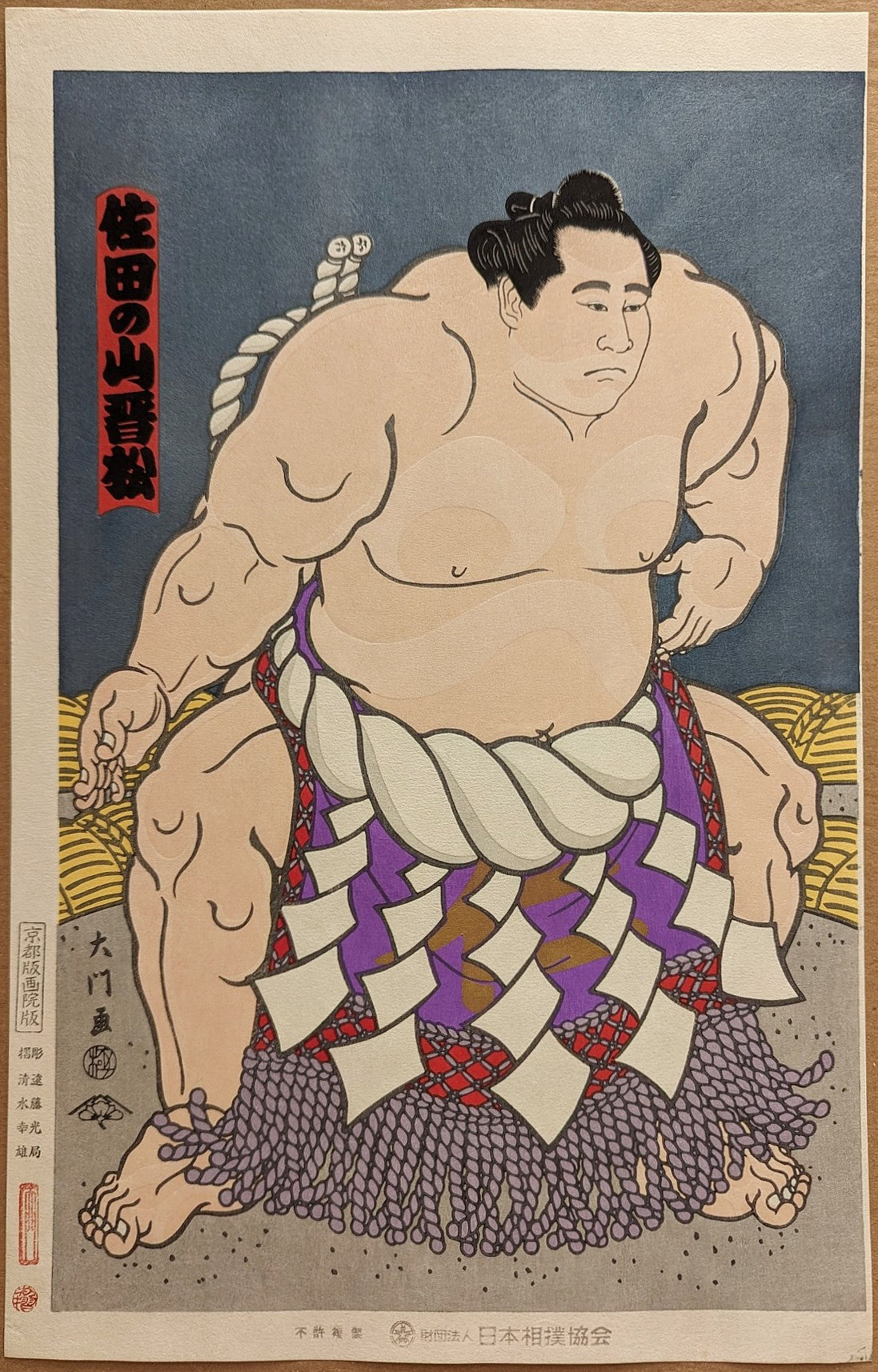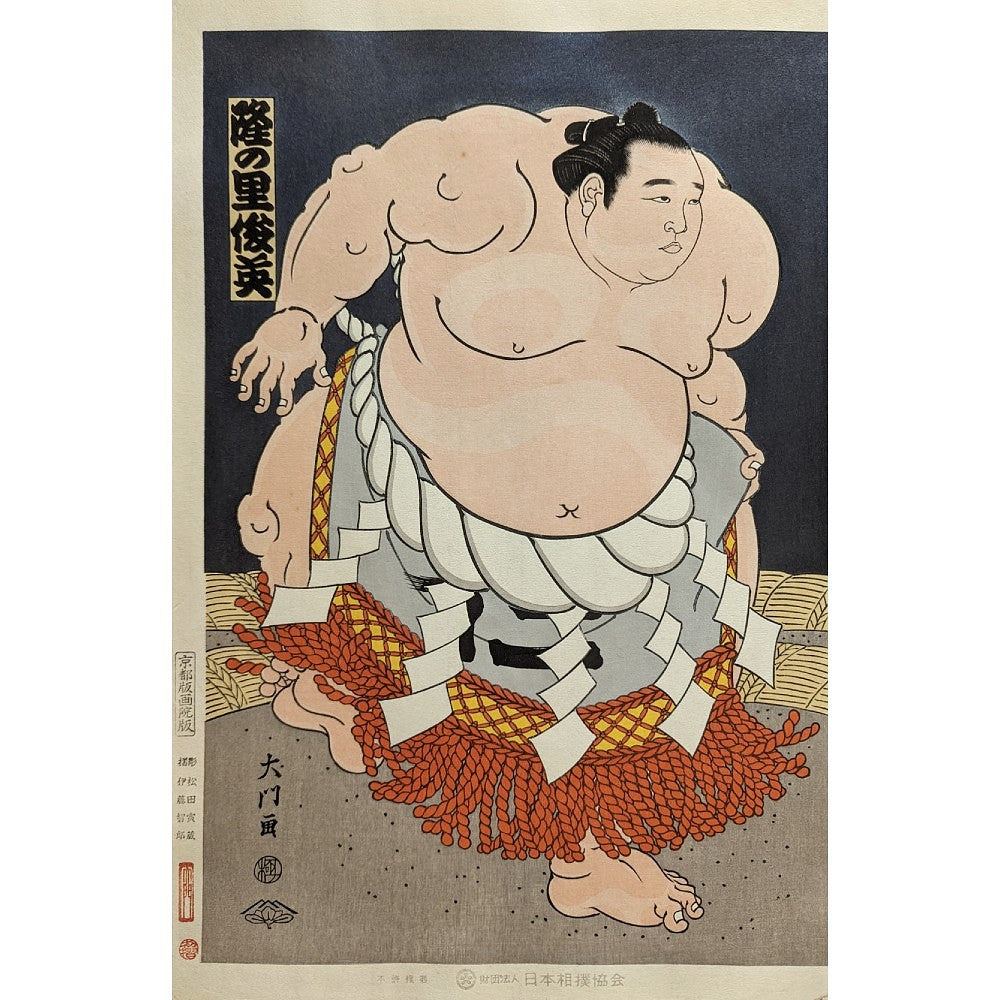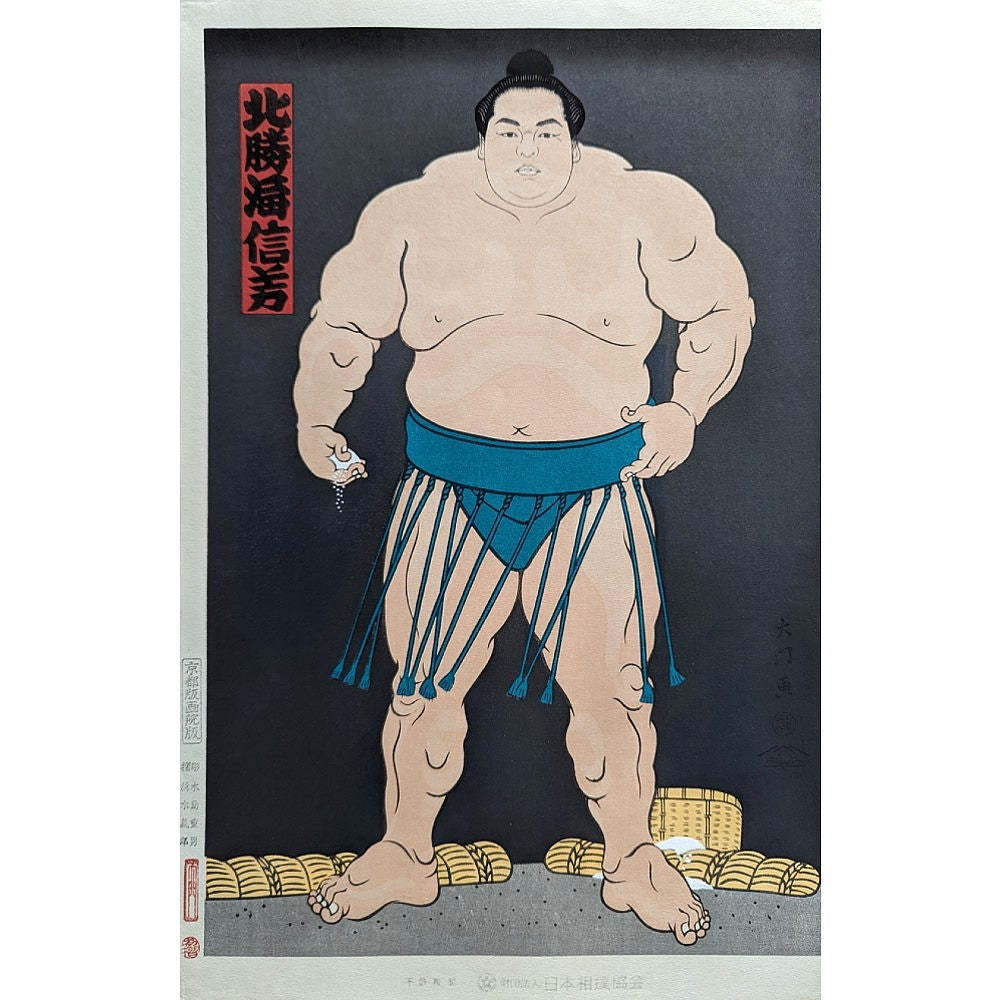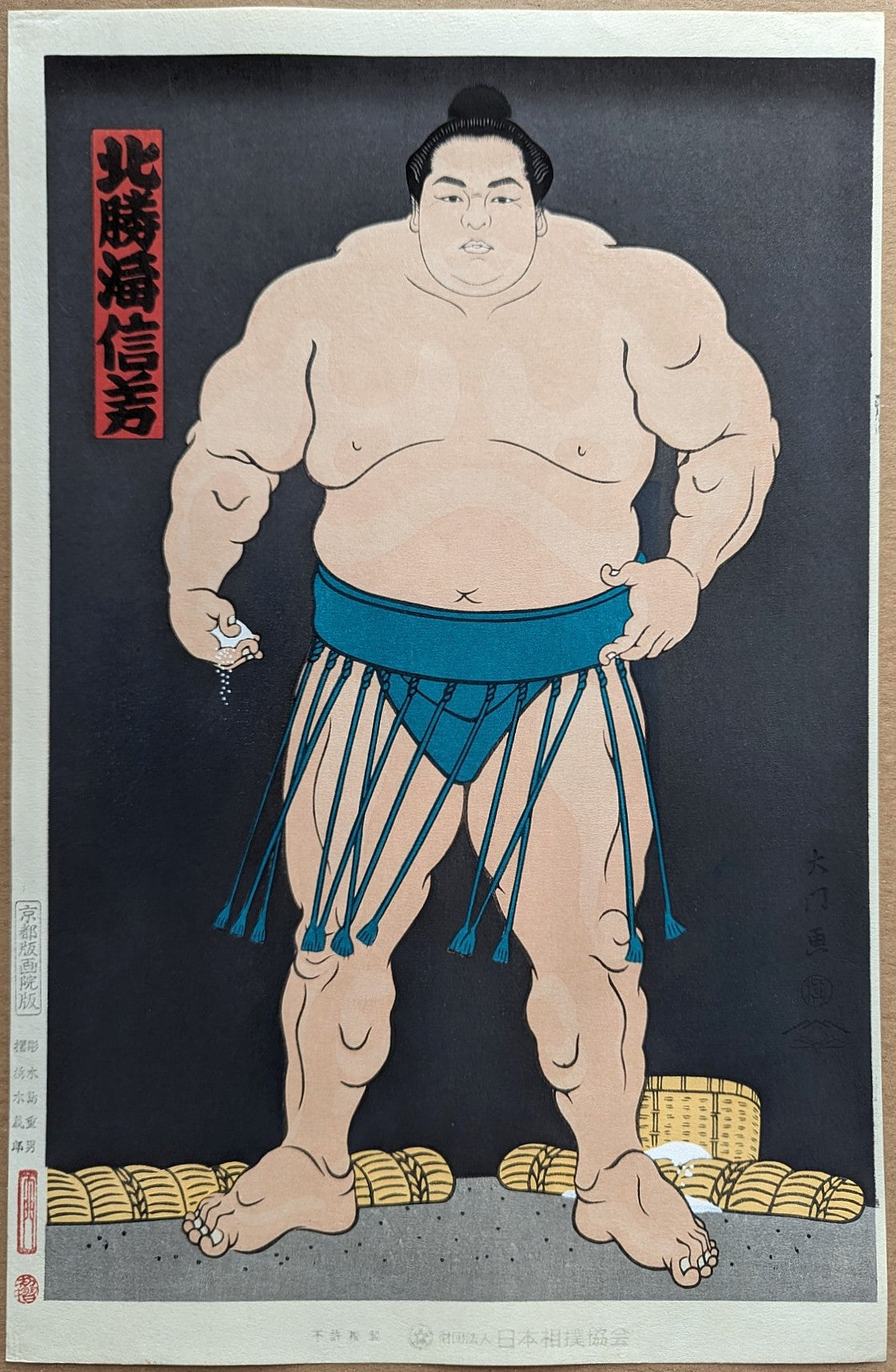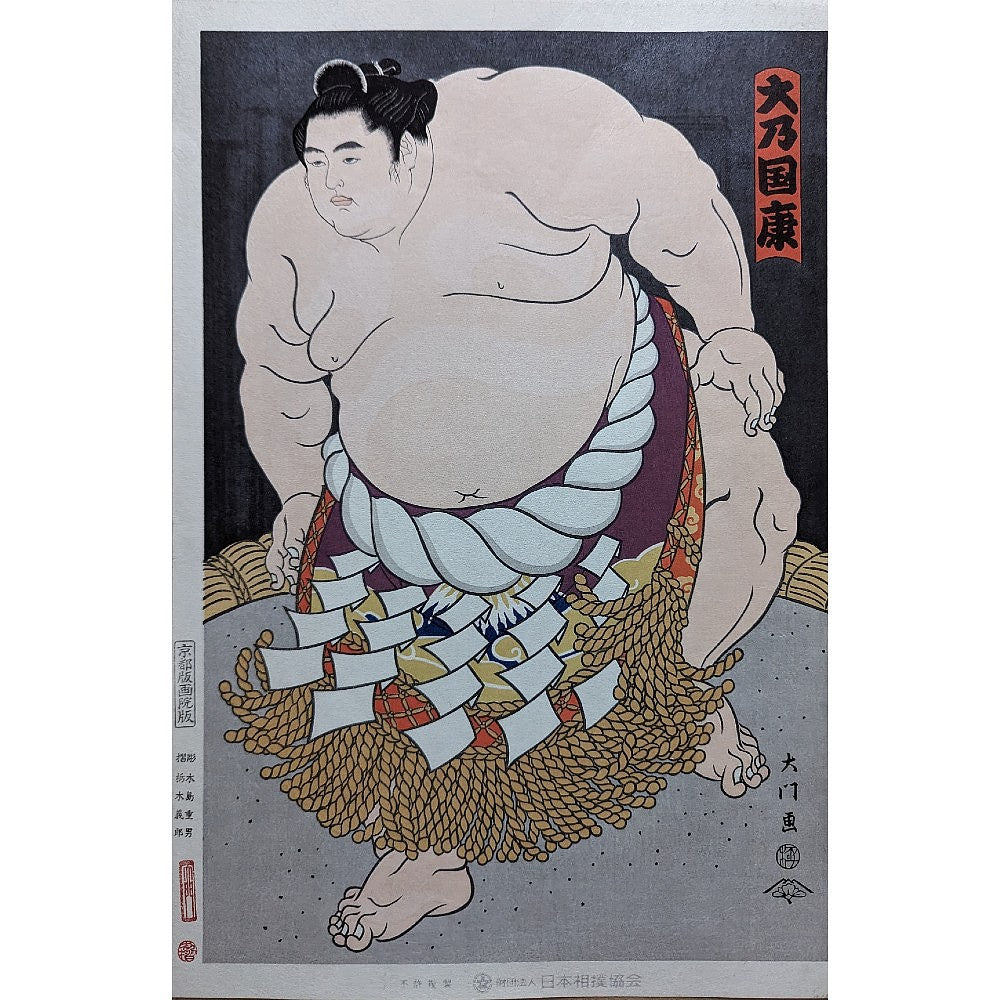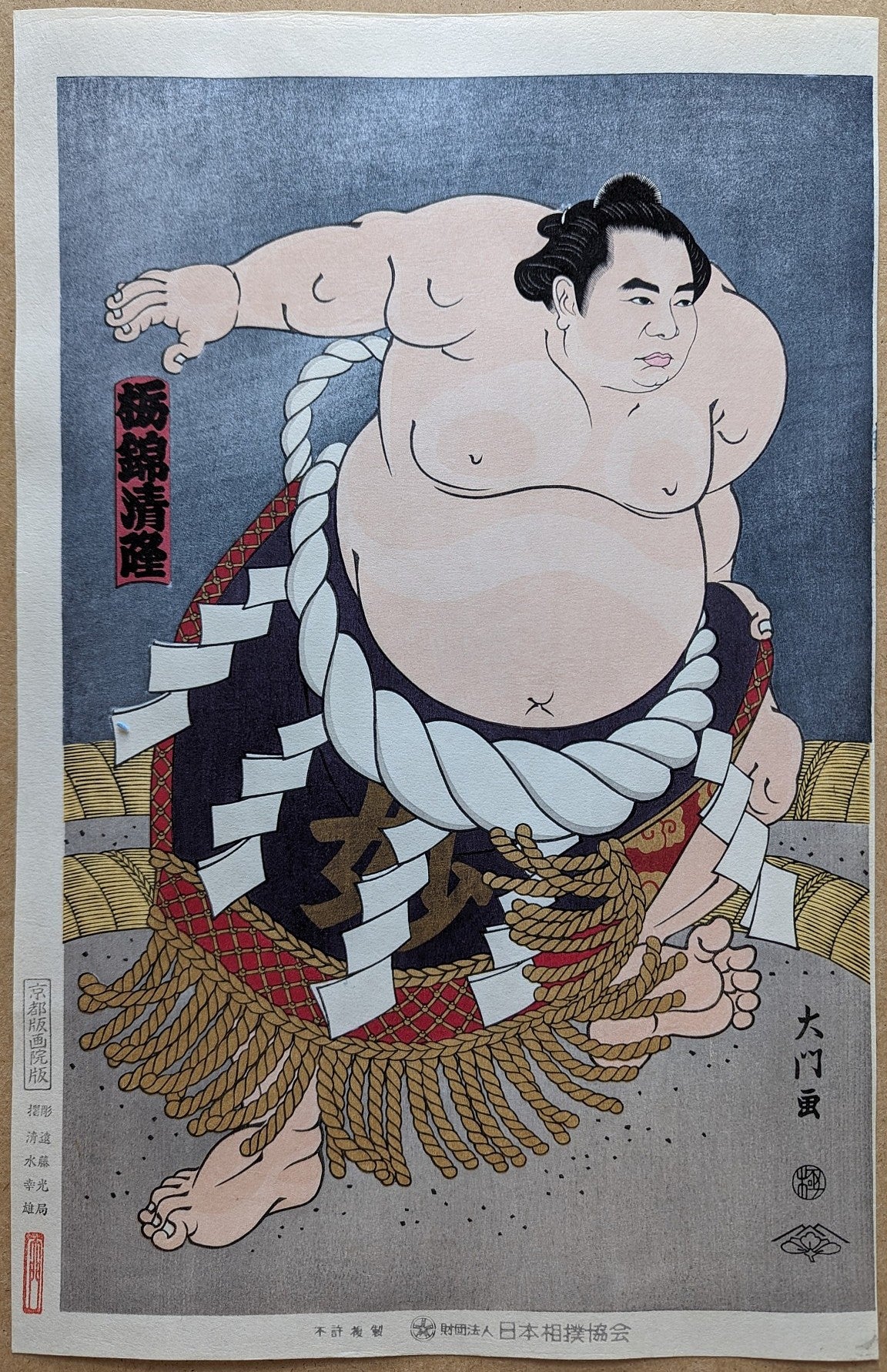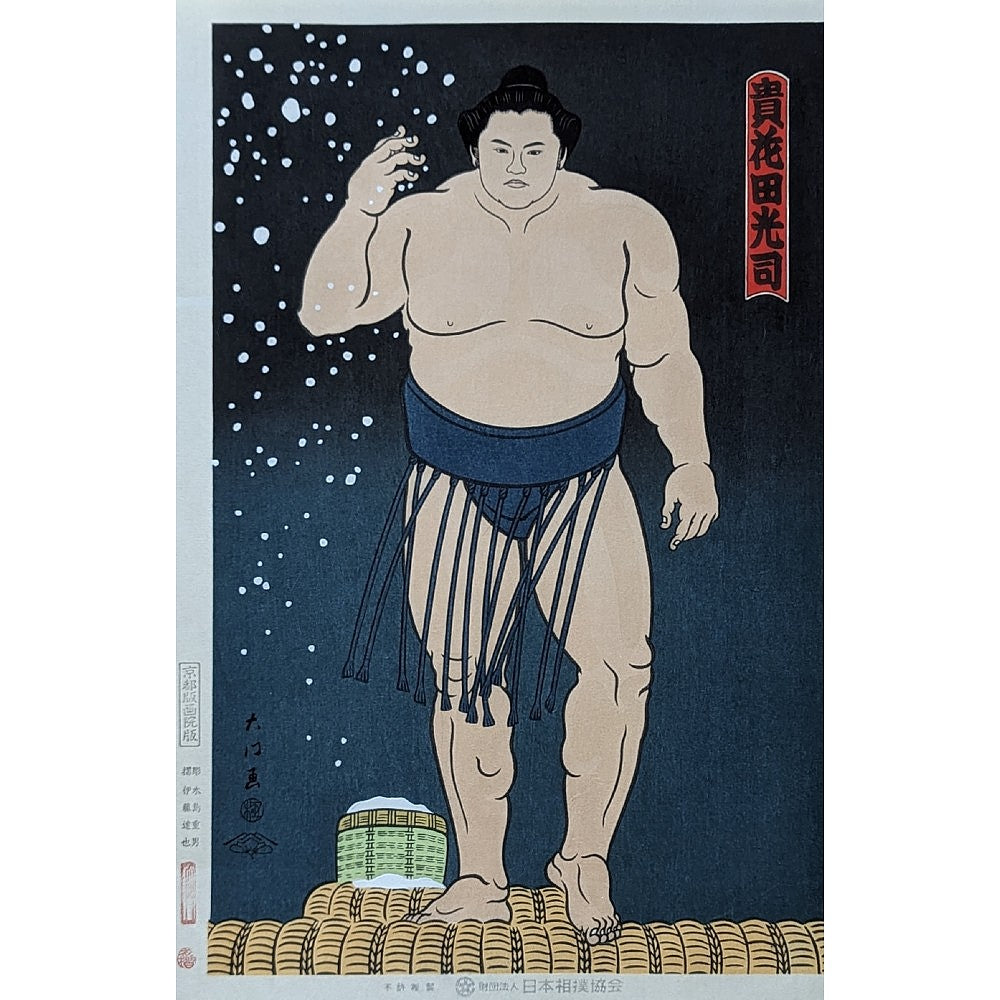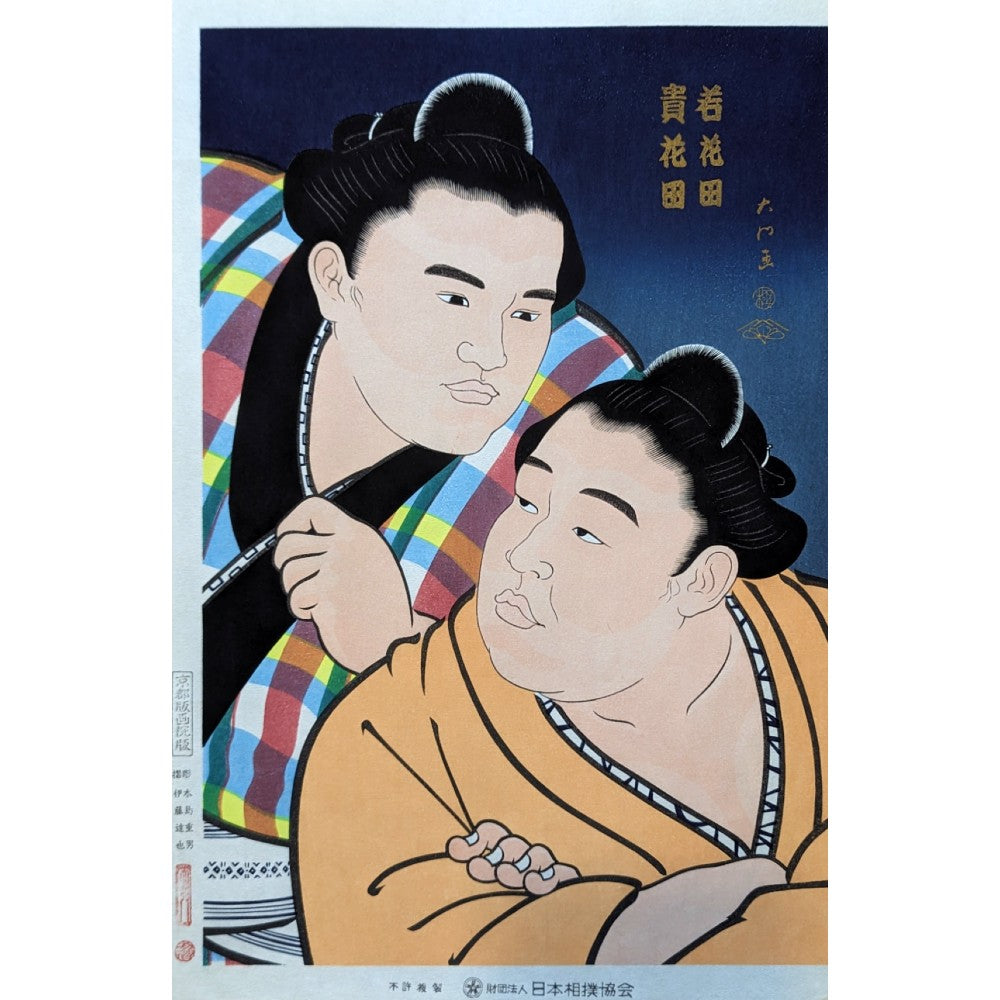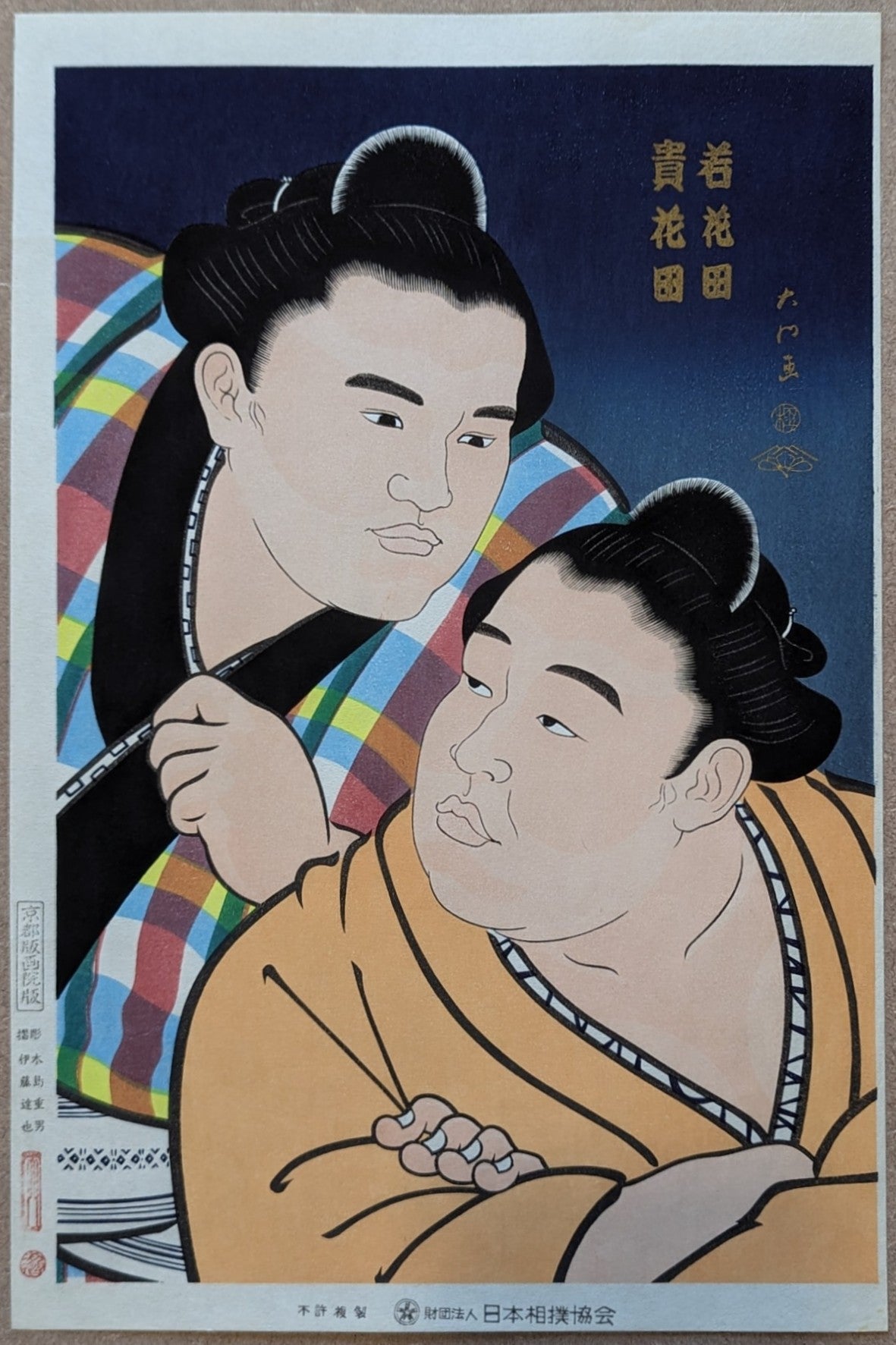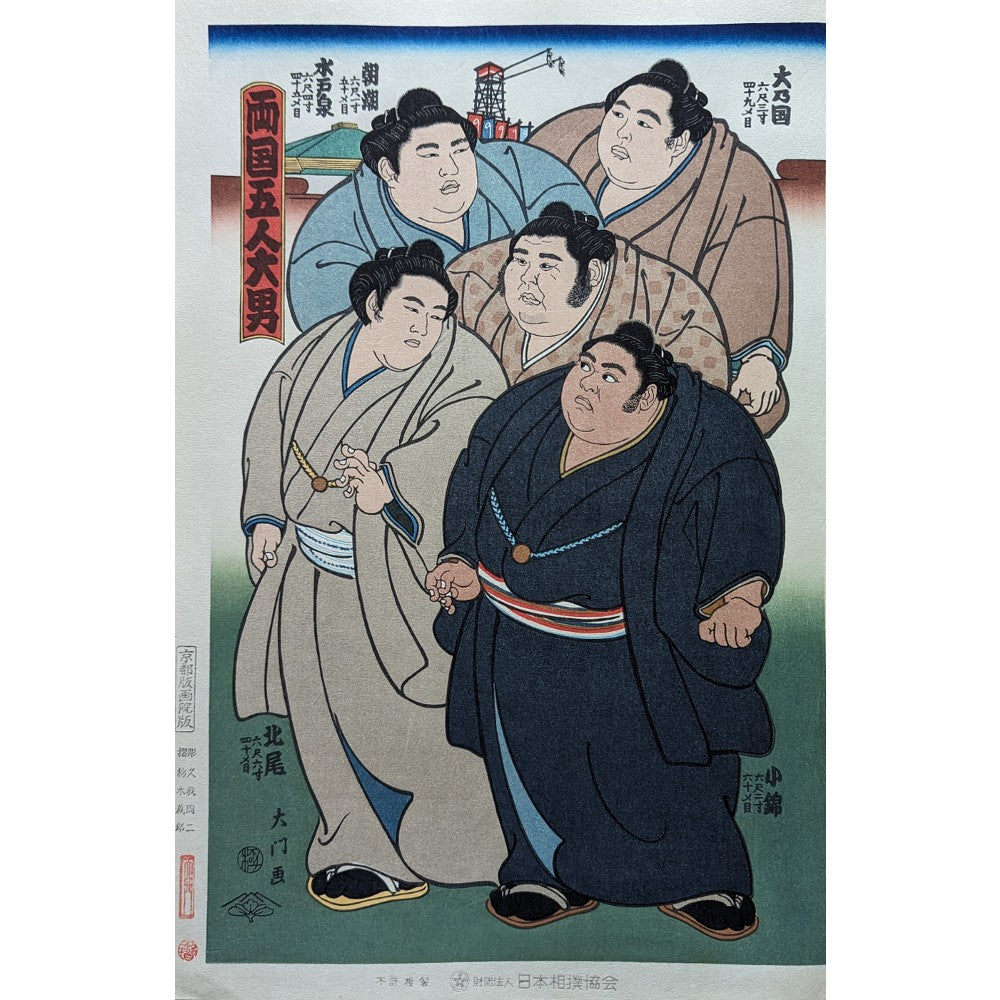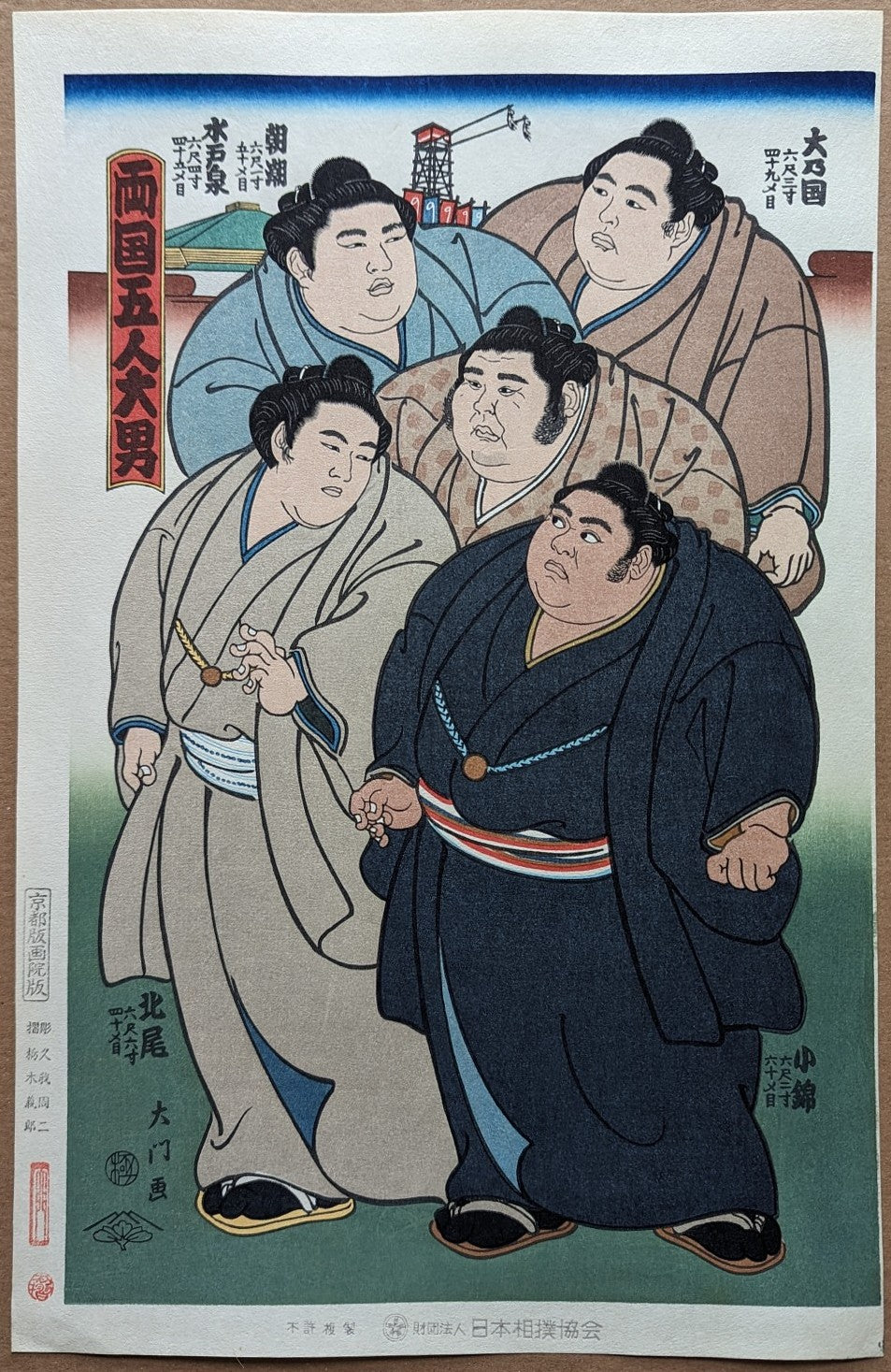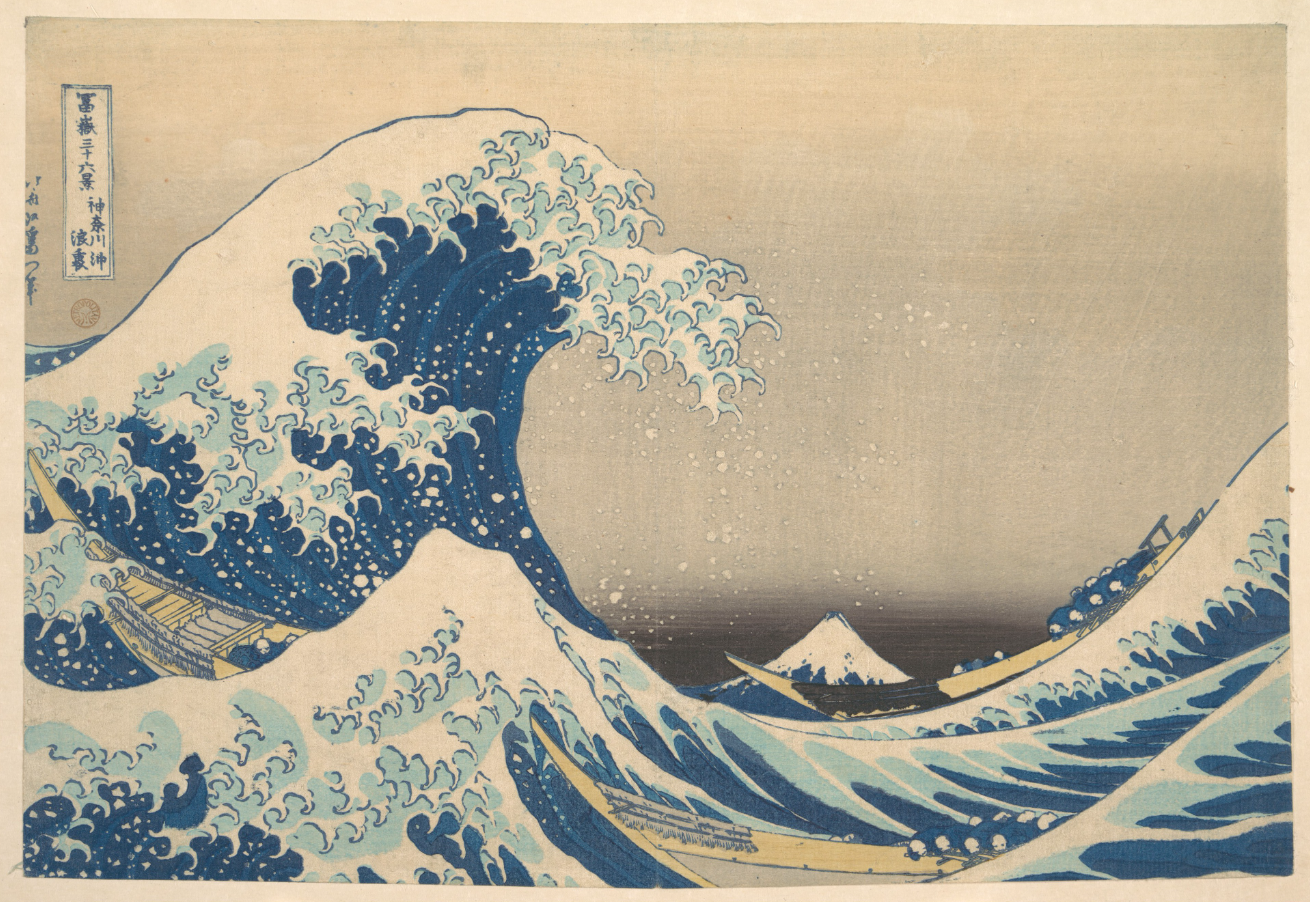木下大門 Daimon Kinoshita (1946-Present)
Reviving Edo Traditions: The Sumo Prints of Daimon Kinoshita
Born in Teshikaga, Hokkaidō in 1946, Daimon Kinoshita first worked as an illustrator in Tokyo before turning to woodblock printmaking in the 1980s. Drawing on the Katsukawa school of the Edo period, he reintroduced sumo nishiki-e (錦絵) with authentic Edo-period ukiyo-e woodblock techniques, restoring the classical hanmoto (版元) system of artist, carver, and printer to late-20th-century printmaking. With the opening of the new Ryōgoku Kokugikan (両国国技館) - Tokyo’s national Sumo stadium - in 1985, he began working with Kyoto Hanga-in and the Japan Sumo Association (日本相撲協会) (www.sumo.or.jp/) to produce formal portraits in the style of classic sumo ukiyo-e.
Kinoshita’s art is rooted in 18th and 19th-century woodblock printing, yet firmly tied to the living world of modern sport. His prints depict Yokozuna (横綱), Ōzeki (大関), and celebrated rikishi (力士, wrestlers) in bold full-length poses, often capturing their signature dohyō-iri (土俵入り) ring-entrance ceremonies, with the shimmering surface of mica (kirazuri) recalling Edo originals. By presenting wrestlers as both athletes and icons, Kinoshita connects the grandeur & ceremonial gravitas of Japan’s national sport with the enduring visual language of ukiyo-e.
During tournaments at the Kokugikan, Kinoshita’s prints are sold at a dedicated shop by the arena entrance, keeping alive the tradition of sumo nishiki-e as popular souvenirs. The Japan Sumo Association has also presented his works to foreign dignitaries - from Prince Charles and Princess Diana to U.S. Secretary of State George Shultz and Paris Mayor Jacques Chirac - affirming their role as cultural ambassadors. For collectors, these prints represent a rare late-20th-century revival of nishiki-e: works of striking beauty and craftsmanship that demonstrate the living mastery of ukiyo-e in the modern age, and a vivid record of sumo’s champions in the format that first brought them to popular audiences centuries ago.


